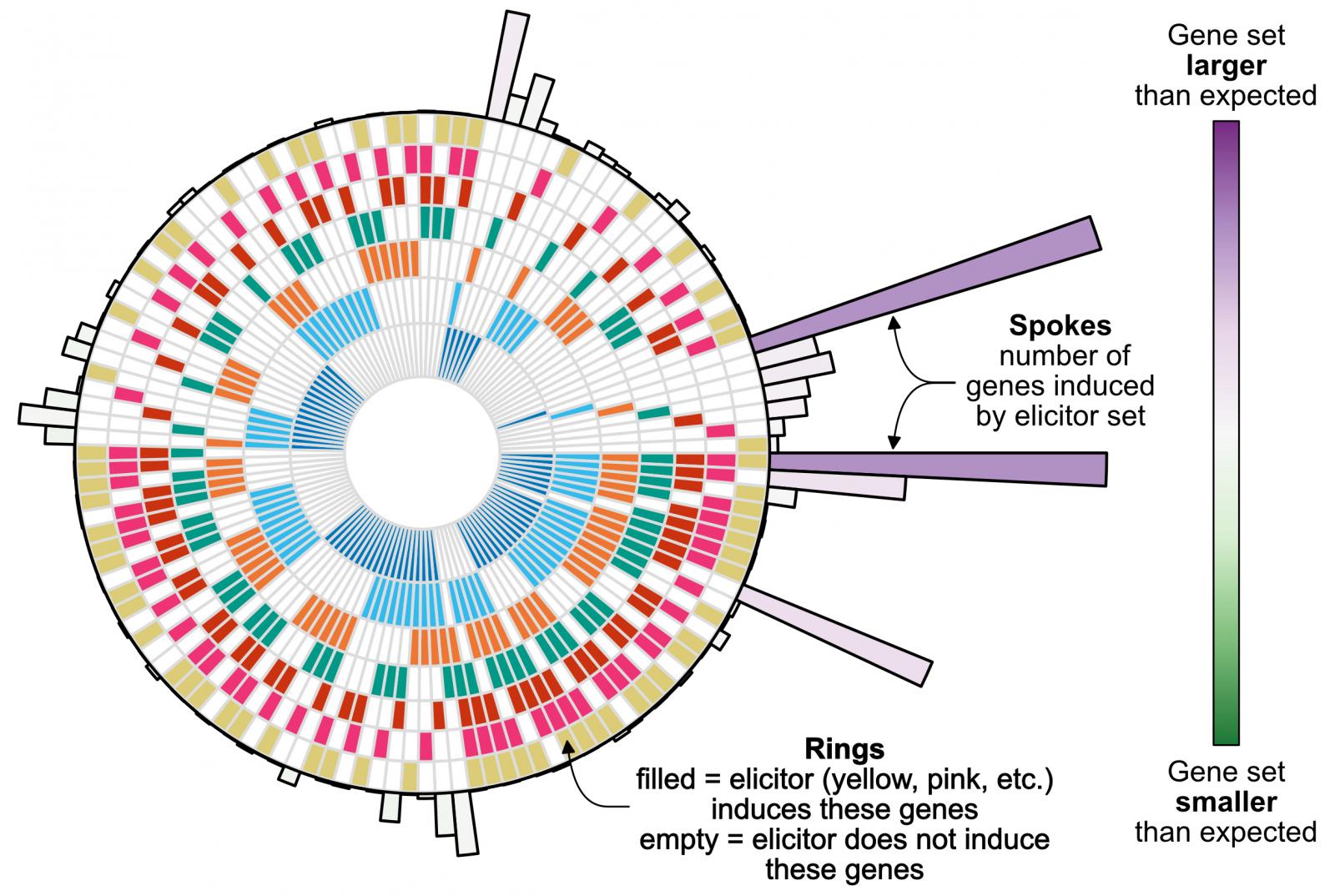United Kingdom
March 15, 2021
Plants adapt to their immediate environment by recognizing distinct molecules. Pattern recognition receptors (PRRs), located on the cell surface, allow the plant to perceive molecular patterns from potential threats, such as microbes. This induces a first level of plant immunity called pattern-triggered immunity. However, while the cell-surface immune receptors are highly specific to the molecular patterns they perceive, it’s not clear if the immune response itself is specific to the perceived threat.
By studying the RNAs of an organism through transcriptomics, it is possible to establish which genes are rapidly expressed and precede protein synthesis. These sets of genes represent the plant’s immune output in response to each stimulus. Scientists at The Sainsbury Laboratory and the University of Zurich, in collaboration with the University of Tübingen, exposed the model plant Arabidopsis thaliana to seven different molecular patterns derived from bacteria, oomycetes, fungi or its own damaged cells. They then analysed whether the plant’s response differed with each pattern, the findings of which were recently published in Nature Plants.
The authors were surprised to find that the initial response to different perceived dangers were remarkably similar, showing that plant cells do not immediately tailor their response to each microbe. In addition, the set of genes induced in the first minutes after detecting a pattern overlapped with that induced by abiotic stresses. This implies that plant cells initially mount a general stress response and simply react to danger. When the genetic components of the general stress response were impaired, so was anti-bacterial immunity, revealing the biological relevance of this initial warning system.
At later time points after exposure, however, the plant’s responses became more specific to immune elicitors. Certain core genes remained conserved over the seven elicitor responses, but not for abiotic stressors, suggesting they represent a more specific immune response. Looking at the function of these core immunity response genes, the scientists identified a family of calcium channels specifically involved in immunity. This had previously escaped attention because of the limitations of classical experimental approaches.

Many elicitors induce a common set of genes. In this comparison of elicitor-induced transcriptomes, all genes are grouped (outside ‘spokes’) according to the elicitors which induce them (seven concentric rings). A filled ring indicates the elicitor induces the gene (e.g. the East spoke includes genes induced by all seven elicitors). Spokes are colored as to whether more genes (purple) or fewer (green) than expected by chance follow that expression pattern.
This study has answered a fundamental question about how plants initially respond to perceived threats. By revealing the roles of both a general stress response and specific immunity responses, scientists will be better equipped to enhance the innate immunity of plants and reduce future use of pesticides in agriculture.
This study, ”The transcriptional landscape of Arabidopsis thaliana pattern-triggered immunity”, appears in Nature Plants.
https://www.nature.com/articles/s41477-021-00874-5
Bjornson, M., Pimprikar, P., Nürnberger, T. and Zipfel, C., 2021. The transcriptional landscape of Arabidopsis thaliana pattern-triggered immunity. Nature Plants, 15 March 2021.
Funding
This research was supported by the Gatsby Charitable Foundation, the European Research Council under the European Union (EU)’s Horizon 2020 research and innovation programme (grant agreement No 773153, project ‘IMMUNO-PEPTALK’), the University of Zürich, and the Swiss National Science Foundation grant no. 31003A_182625. Marta Bjornson was partially supported by the EU’s Horizon 2020 Research and Innovation Program under Marie Skłodowska-Curie Actions.
About the Sainsbury Laboratory
The Sainsbury Laboratory is a world-leading independent research institute that specialises in plant-microbe interactions, funded by The Gatsby Charitable Foundation, The University of East Anglia and UKRI-BBSRC. Its work is focused on leading global efforts to reduce crop losses to disease.
About the University of Zurich
The University of Zurich (UZH) is a member of the League of European Research Universities and numbers among Europe’s most prestigious research institutions. UZH’s international standing is reflected in the many renowned academic distinctions conferred upon its members, including twelve Nobel Prizes. As Switzerland’s largest university, UZH has a current enrolment of over 26,000 students and offers the most comprehensive academic program in the country. Nearly 5,000 excellent members of staff teach and perform research at one of the University’s 130 departments, including 675 professors. UZH also looks back on a rich history, having been founded in 1833 as Europe’s first university to be established by a democratic political system.